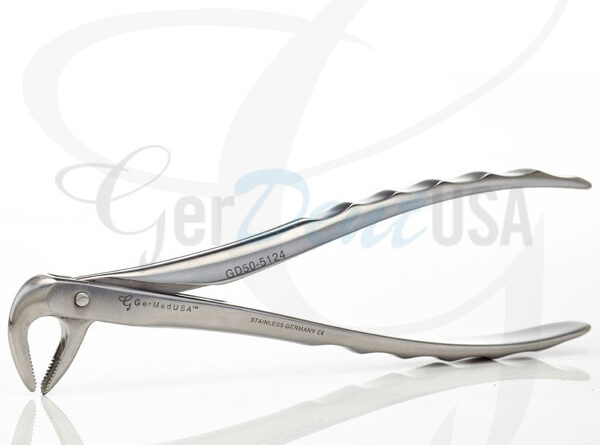Crane Pick Elevator is a remarkable elevator to treat the dead roots in dental surgical procedures. The precise functioning of this tool accommodates the tooth extraction procedure. The tool works cautiously; it means that it does not damage the adjacent healthy teeth while moving in the oral cavity. The dentists consider this design significant to grasp the tooth roots without rupturing them.
A dentist has to educate himself about the interesting design of the elevator. The small details in this design matter a great deal. The tool is of great importance because of its active components such as tips, blades, and a handle. The dental instrument works with curve-shaped tips that protect fragile oral structures from injury. The elevator functions with a highly accurate drilling mechanism. The tool makes dents in the roots so that the dentist can place the angular blades inside the roots.
Table of Contents
Using a Crane Pick Elevator in Dental Procedures
It is important to follow the instructions below while using a crane pick elevator:
- Always use suitable oral structures as a fulcrum during dental procedures
- It is better to use finger guards to prevent trauma and damage
- The shank will perform better if the user holds it with the forefinger
- The user can easily dislocate the tooth from accessible sides like the mesial and buccal sides
Main Components of Crane Pick Elevator
1. Handle
The handle is the active functional part. The premium design of the handle provides efficient control of the entire tool. The tensile strength of the handle allows the user to exert sufficient pressure on the tooth to dislodge it. The complete structure of the tool enables the user to freely move his or her hand during the dental procedure.
2. Shank
The second important component is the shank. It acts as the attachment for the handle. It can assist the dentist to reach the deepest and most restricted regions of the oral cavity. Shank helps to get the better visibility of the surgical sites without damaging the nearby structures as it keeps the tips in a firm position to avoid sliding and breaking of the tips during the dental procedure.
3. Tip/blade
The sturdy tips are for cutting the periodontal structures around the tooth.. The tips enable the user to maneuver and rotate them to his or her will.y. This makes it paramount for a dentist to carefully use the elevator on the left side.
Uses and Function of Crane Pick Elevator
Dentists mostly use elevators along with forceps for efficiency in dental procedures. The forceps work on bringing the tooth out of the oral cavity after the elevator dispositions it from its socket.
Following are the typical uses of this special dental instrument in different dental applications and procedures:
- Dentists use crane pick elevator to extract decayed teeth by exerting pressure.
- It’s an efficient tool for cutting the dead roots present around the tooth for atraumatic extraction.
- Crane Pick Elevators are helpful to treat the damaged teeth, and malposed roots in dental extraction procedures.
Application Of Dental Elevator In Tooth Extraction
Different dental procedures call for particular dental tools. It means that specific dental tools can facilitate a particular nature of the dental procedure. It also depends on the severity of the decayed tooth, root, and other oral structures. This factor determines the suitable utilization of a dental instrument on the patient.
A dentist has to be meticulous while dealing with a tooth present in the alveolar or buccal bone. These are extremely delicate oral structures that need attention. The user has to pull the tooth out of these structures with utmost care. For this reason, favorable and appropriate dental tools are necessary for usage.
Anglevators and Pick-type Luxation tools
The major dental concerns that require tooth extractions result from gum and tooth-relevant problems. Among these, some cases include diseased periodontal fibers. These dental issues need an immediate dental response by separating the tooth from the socket.
After the completion of a dental procedure, a dentist can leave the root fragments in the oral cavity. The elevators are reliable tools to take out these fragments.
Anglevators are specially designed variations that help to detach the roots and periodontal ligaments around the tooth. These oral structures form an intricate network. The tip of the tool efficiently provides convenience to grab the tooth for extraction without compromising it.
Conclusion
As discussed, dentists can’t perform tooth extraction procedures without the help of dental elevators. The most commonly used elevator in tooth removal processes is the Crane Pick elevator. Its fine and blunt edges prevent damage to adjacent teeth, gums, and tissues. Consider buying dental surgical tools from GerDentUSA Inc. It supplies and manufactures prime-quality dental tools at competitive prices.
Frequently Asked Questions
What is a root tip pick?
Root tip picks are famous for the name of root tip elevators as well. They are ideal for treating the remaining root parts present in the tight regions of the oral cavity after the tooth extraction. The thin tips of the elevators grasp the fragile roots and gently take them out.
What is an elevator for extraction?
Elevators are regular dental tools for tooth extractions. Besides, these have other dental applications like handling periodontal fibers and dead roots. These are suitable for complex dental procedures and enhance the chances of successful tooth extractions.






